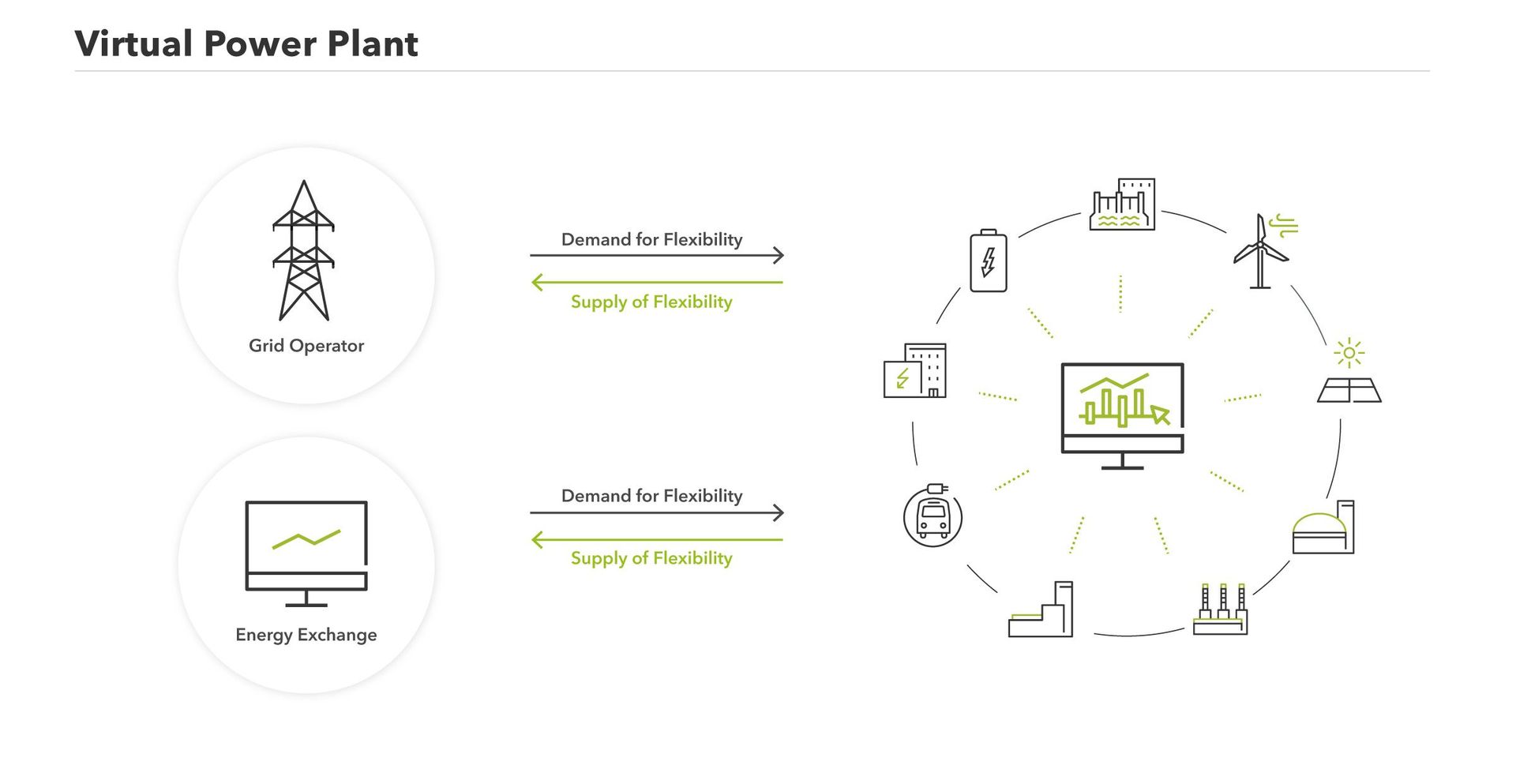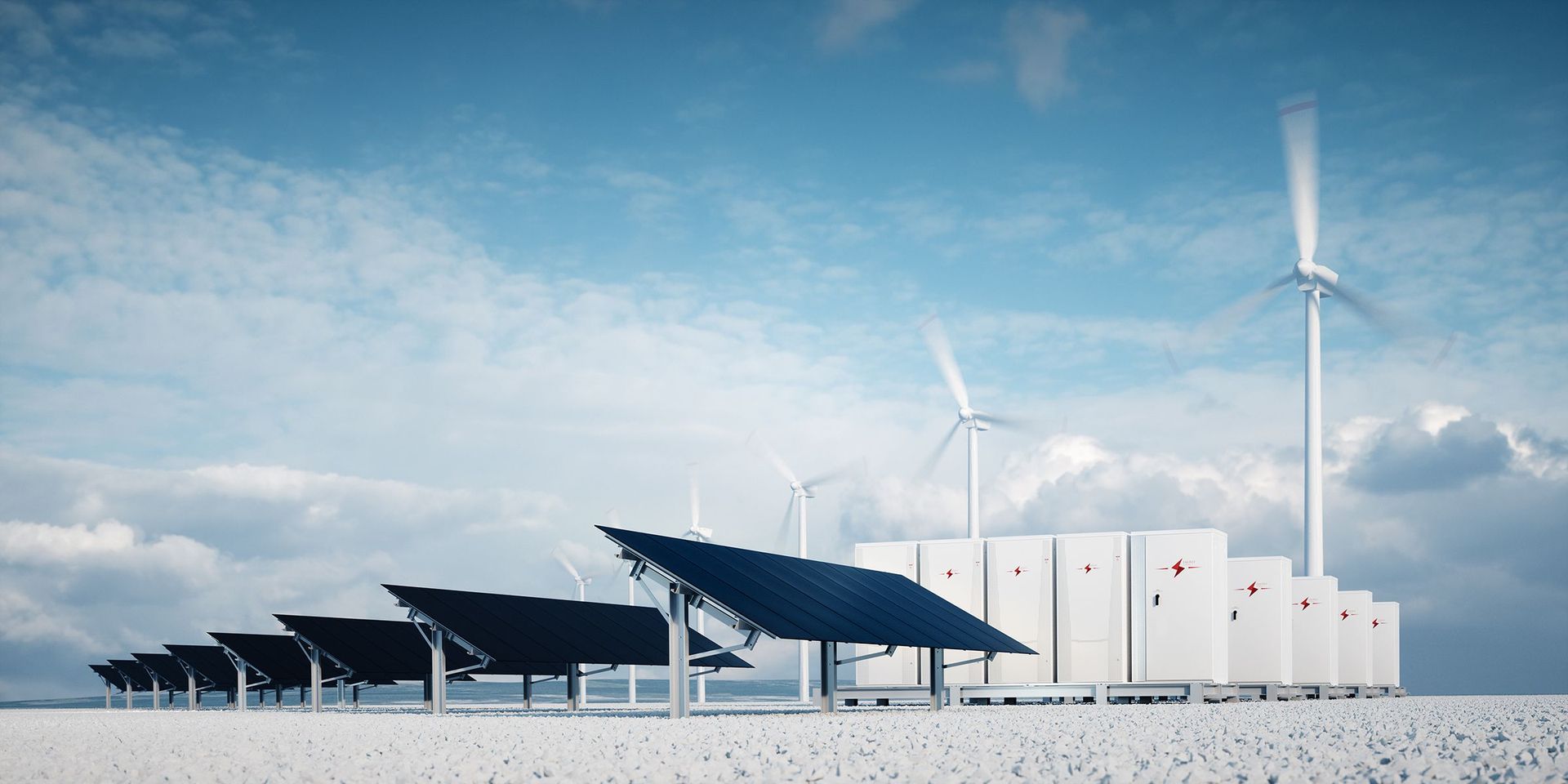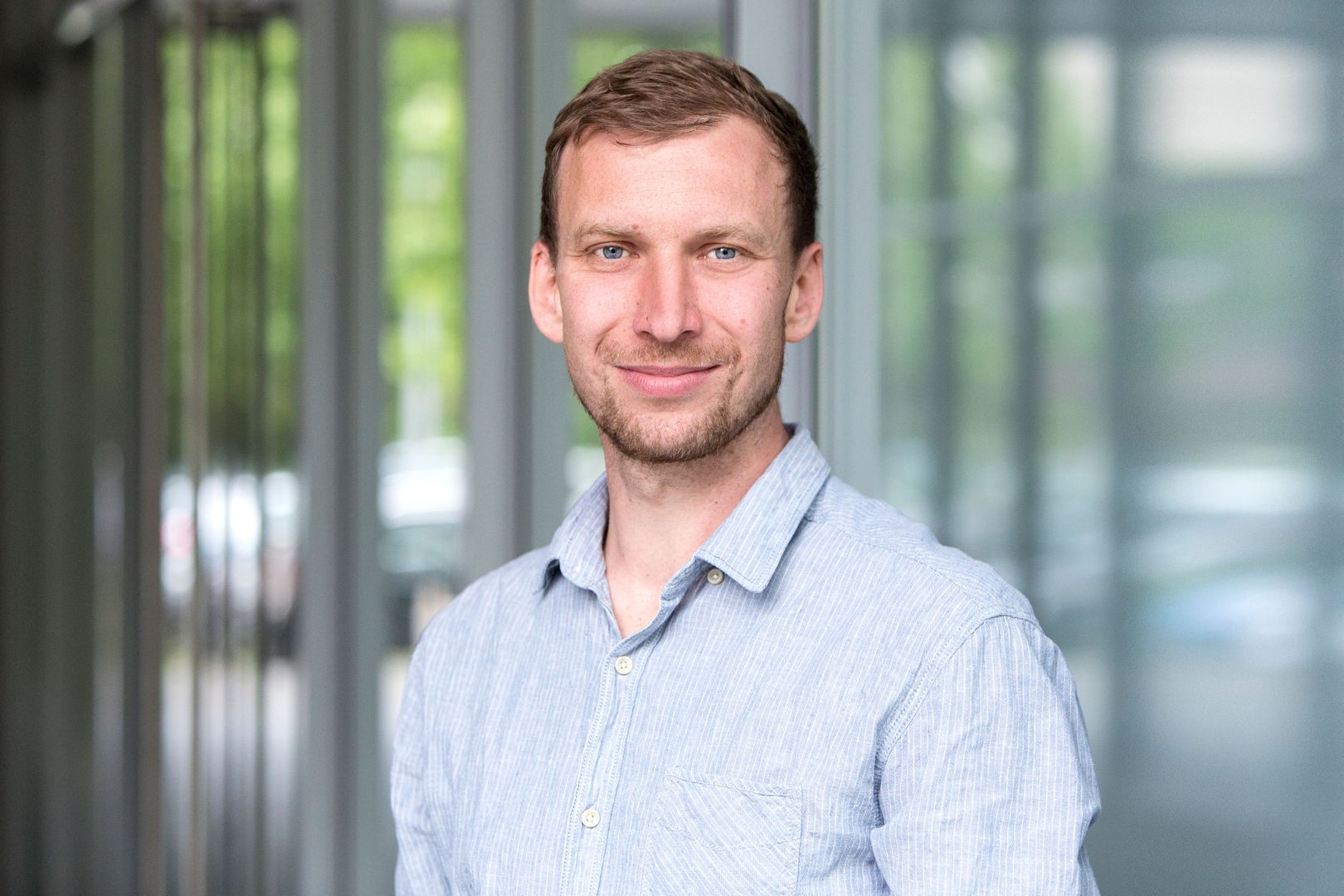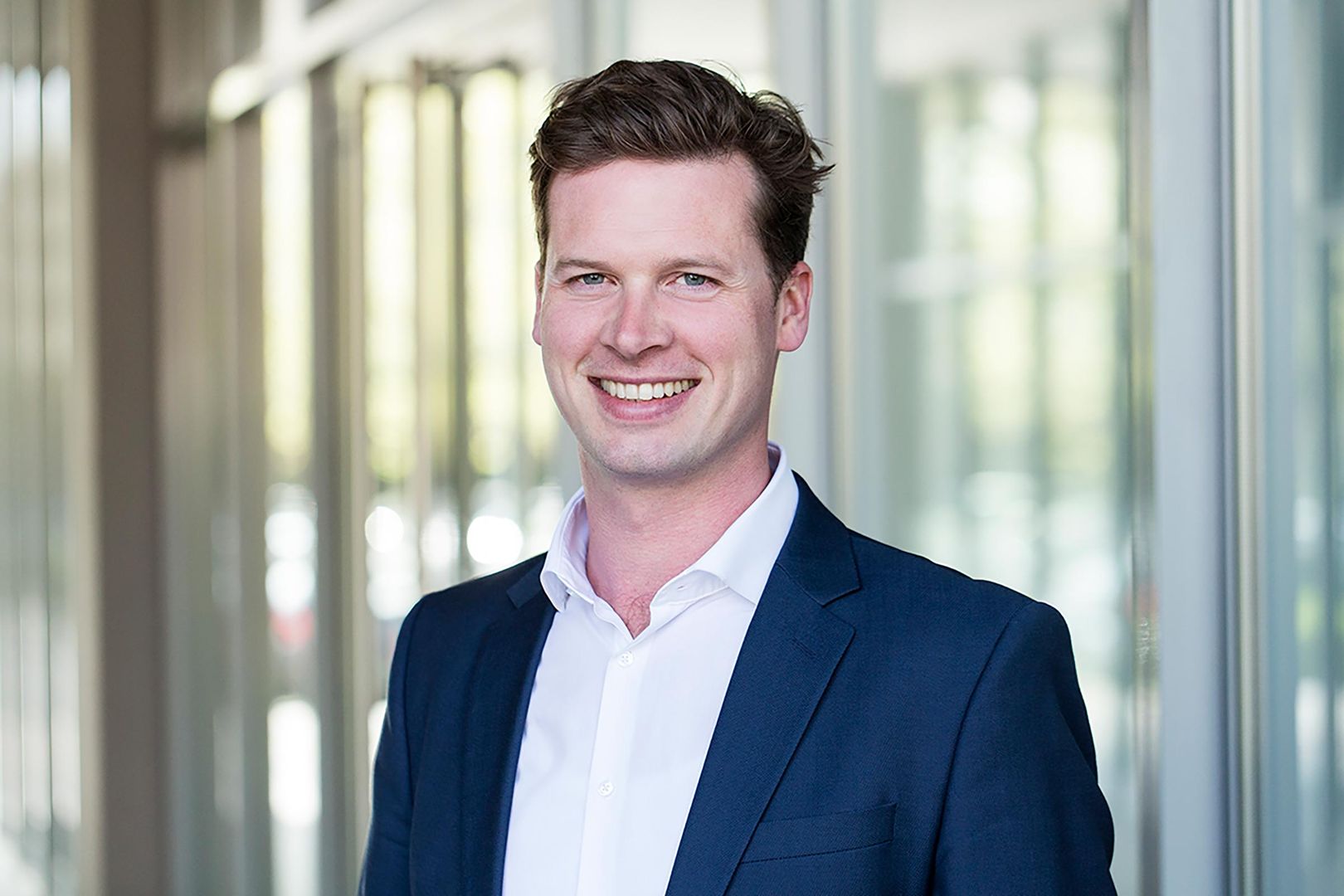How to balance supply and demand on new electricity markets
Electricity markets around the world are experiencing a fundamental change: the rapid rise of renewable power generation. In some places the power generation of renewables is occasionally exceeding the total demand in the electricity grid.

In Germany, for example, renewables already dominate all other technologies in the average energy mix. This is an upward trend, because all German nuclear plants will be phased out by 2022 and lignite/coal capacities of more than 7 GW will leave the market in reaction to recently introduced carbon reduction policies. How do the traditional electricity market mechanisms deal with this?
Traditionally, grid operators assumed the load as a given and adjusted the supply accordingly: They ranked the available fossil fuel plants in the so-called merit order to meet demand first with the lowest cost option, gradually moving up the merit order until demand is fully covered. Usually large nuclear or lignite-fired units ran at full throttle to cover the base load throughout the year. Some coal and lignite units were generally dispatched at medium throttle and then adjusted to meet the hourly, daily and seasonal variations in demand. To cover peak demand – for example on hot summer days with high air condition load – gas-fired plants and pumped-storage plants were dispatched in the rare occasions they were needed in.
In a market based on renewable energy, the traditional merit order dispatch faces new challenges. Solar and wind energy, the backbone of future electricity markets, are intermittent in nature – and therefore must be utilized when they are available, otherwise they are wasted. The reverse side of this attribute: Plant and grid operators cannot order wind or solar plants to produce energy when it is needed as they were used to do so in the traditional merit order approach. This clearly demonstrates: When more and more countries rely on intermittent renewable energies, we need new concepts to balance load and generation to keep a stable grid.
One fundamental way of thinking about this challenge is to define supply and demand as flexible variables. Rather than forcing generation to follow the load, both could be adjusted in relation to each other. This is the basic idea of Next Kraftwerke’s Virtual Power Plant (VPP): Today, we already network more than 3,500 electricity producing and consuming units with a combined capacity of more than 2,000 megawatts – thereby replacing the equivalent of two large coal-fired power plants. The objective is to smartly distribute supply and demand and to profitably trade the generated and consumed power. In effect the idea is to produce electricity when it is scarce and consume electricity when it is plentiful. Our system’s flexibility stems from the diversity of our clients. Besides solar and wind generators, the Virtual Power Plant includes generators with flexible output such as biomass and hydro, customers with flexible onsite CHP generation as well as large-scale commercial and industrial customers with flexible demand.

Since starting operations in 2009, we have expanded our services by offering power trading on different power exchanges and control reserve markets, balancing services for utilities and volatile power plants as well as (flexible) electricity rates for industrial and commercial power consumers. Based on our own weather forecasts, we suggest ideal hourly schedules for the producers and consumers in the Virtual Power Plant one day before delivery. We then trade the corresponding electricity volumes for each hour on the day-ahead markets of European power exchanges. Our continuous forecasting tools identify the hourly and within-the-hour forecasting errors that materialize after the day-ahead. Levelling is realized by buying and selling power on intraday markets or even by dispatching networked assets on a quarter-hourly basis.
Managing the interactions between the various participants is complex – but the logic is simple: When demand and prices are high, clients with flexible generation such as CHP plants, biomass or hydro are encouraged to produce as much as they can; and clients with flexible load are encouraged to reduce consumption to a minimum. When prices and demand are low, the incentives are reversed: Clients with flexible generation are encouraged to reduce production to the extent feasible; and clients with flexible load are encouraged to increase consumption to the extent practical.
This balancing of supply and demand is accomplished automatically through M2M communication: The Next Box – a remote access module that was specifically designed for our needs – transmits GPRS signals. By using the Next Box, we are able to automatically regulate the power-producing and power-consuming units through the central control system of Next Kraftwerke’s Virtual Power Plant. To successfully manage power supply and demand, we developed a dedicated algorithm. It collects and computes data from various sources: operational data from our Virtual Power Plant, current weather and grid data as well as live market data. The accumulated data allows us to trade power with the highest profitability on day-ahead, intraday and control reserve markets.
More to read
What types of customers are participating on the consumption side? Many consumers possess flexibility in their use of electricity. This applies especially to customers with inert processes such as pumping, heating, melting, crushing, processing etc. These customers can shift their heavy consumption periods to times of low cost electricity without compromising their operations. This is what we call Demand Response: Consumers shift demand from high-price to lower-price times of the day in a constant optimization.
Of course not every consumer is able to change his electricity-consuming processes on a quarter-hourly basis. And not every plant is able to offer a great amount of flexibility. For example, some biogas plants feature relatively small gas storage tanks or they are obliged to provide heat to a local heat network, which results in a certain amount of obligatory electricity production. All the processes and their restrictions involved in the plant’s operation need to be analyzed in order to determine the range of flexibility of that particular power plant – and the same applies to flexibility restrictions of other power producers and even consumers.
When bottlenecks are identified, these can often be minimized to enlarge the amount of flexibility coming from a single installation networked in our VPP – for example by investing in larger tanks, in heat buffers etc. To secure the future power supply, such investments are extremely useful. 18 GW of conventional nuclear and coal/lignite capacity are leaving the market by 2025 in Germany alone. Even with more installations of wind and solar, there will be times in the year, when there is hardly any wind or solar power. In these times flexible renewables that are able to ramp up and flexible consumers that can ramp down will be in high demand.
- This article first appeared in the November 2016 issue of Gencom's newsletter.
- Photo Credit: Charles Thompson, License: CC BY 2.0
More services and information




